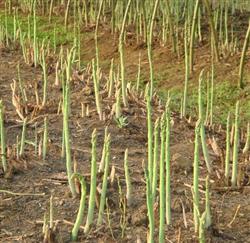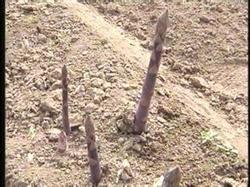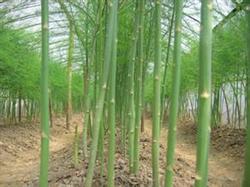Chemical weeding in asparagus field

Asparagus row spacing is large, easy to breed weeds, white asparagus harvest period ridging, bamboo shoots do not come out of the ground, chemical weeding is also difficult to implement. The main weeds of asparagus are Chenopodium (gray stripe), field whorl (playing bowl flower), Cyperus roxburghii (Trigonium), Castanopsis grossedentata, barnyardgrass, dog tail and so on. Insecticidal herbicides are often used during spring harvest. Early harvest grass with "grass Jian" (paraquat) first spray, 100 ml per barrel, spray the liquid evenly on the leaves of weeds. During the breeding and spread of perennial weeds in the middle of harvest, glyphosate series herbicides (10% glyphosate, 48% Kodalin, Nongjiale 747, etc.) were used to prepare the solution according to the size, number and active ingredient content of the grass. Generally use 10% glyphosate 800 ml per barrel, two barrels of medicine per mu. When perennial weeds are serious, glyphosate is sprayed twice every 10-15 days. In general, perennial weeds can be completely eliminated in 2-3 days. When spraying glyphosate herbicides, we should pay attention to: first, prepare synergists and adhesives; second, before 9: 00 in the morning and after 4: 00 p.m., avoid spraying at high temperature at noon; third, do not use saline-alkali water or turbid water. Spray paraquat again before ridging at the end of asparagus harvest, kill all weeds in the field and then remove the ridges. Immediately after ridging, spray the ground with pre-bud remover, use 48% trifluralin, 150-200 ml per mu, 30-45 kg of water, and mix the soil after spraying. In the fields with many broad-leaf weeds, "Tianpu" or "Shitianbu" can be selected for pre-bud weeding, which can effectively control monocotyledonous and dicotyledonous weeds. In the vigorous growth stage of asparagus, the grass was sprayed with "idle hoe" in the early stage, and directed spraying with germicidal herbicides in the later stage, according to the drug instructions.
- Prev

Cultivation Techniques of Asparagus in Summer
1. Asparagus blight 1. Symptoms. This disease is also called blight, which is a soil-borne disease. At first, individual plants in the field turned yellow and wilted. After the disease expanded, the whole plant died, the tender stem was infected, the pseudo-leaves and stems turned brown or split longitudinally. The underground stems and roots of the diseased plants could show brown disease spots. In the later stage, the diseased parts rotted, producing white to pink mold...
- Next

Management techniques of fertilization and soil cultivation of asparagus
1. Fertilizing and cultivating asparagus should use more organic fertilizer to make the soil loose and fertile, which is beneficial to the development of underground stem and root system. The amount of fertilizer was comprehensively considered according to the plant growth, soil fertility and utilization rate. The growth of the plant includes the yield of tender stem, the weight of aboveground stem and underground stem and fleshy root.
Related
- Where is it suitable to grow horseradish in China? it is expected to see the middle altitude horseradish in Alishan.
- How to prevent tomato virus disease reasonably? (Control methods included)
- Many people like to plant towel gourd on the balcony. What are the main points of this method and management?
- What crops can chili peppers be mixed with?
- Fertilization techniques and matters needing attention in Tomato
- What are the grafting techniques for peach seedlings in spring?
- Harm and control methods of root swelling disease of Chinese cabbage
- What are the pests of sweet potatoes? How to prevent and cure it?
- Symptoms, causes and Control methods of navel Rot in Tomato
- The cause of "Cucumber rotten bibcock" in Farmers' planting Cucumber and its Control Plan

